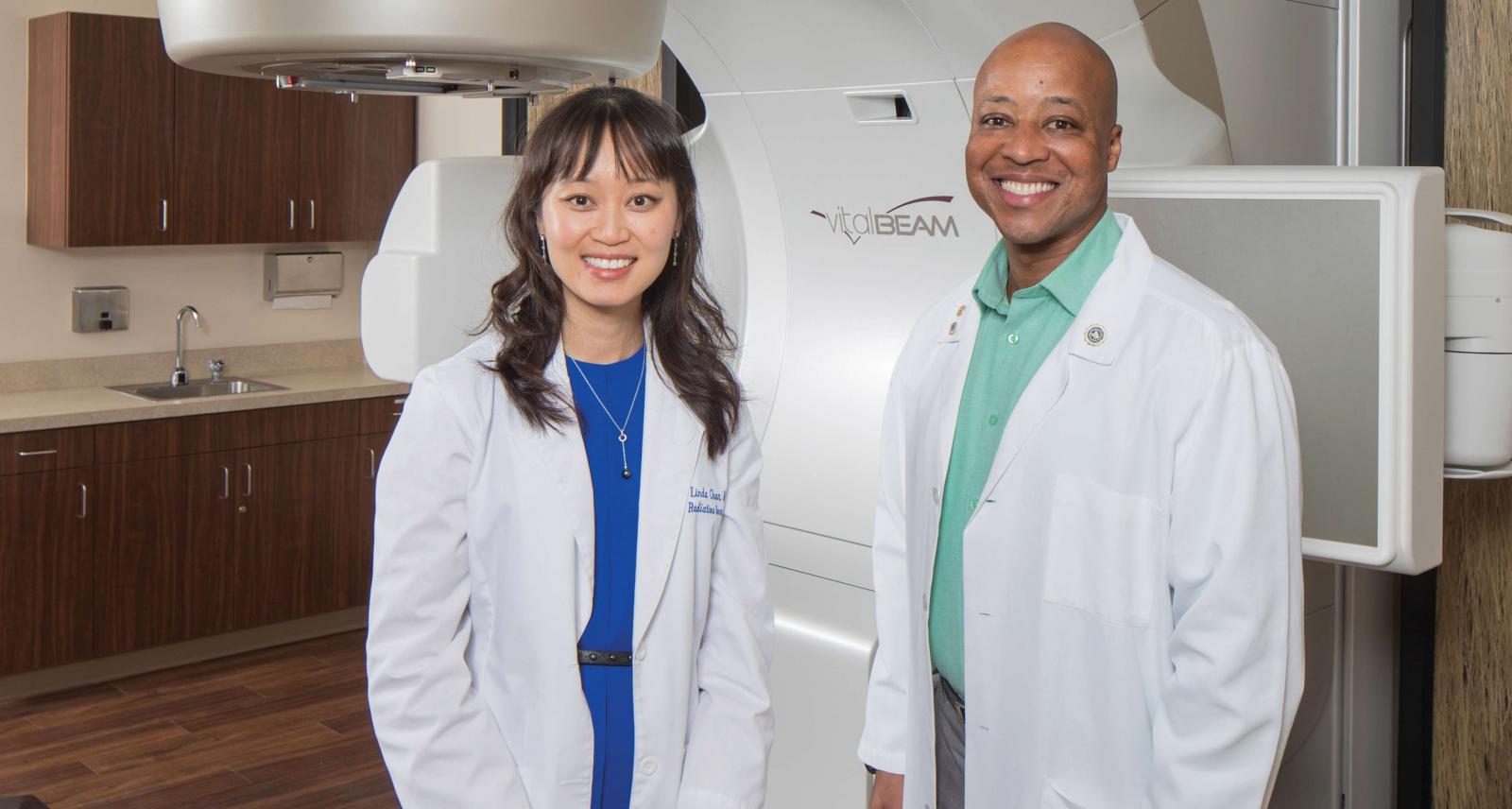
A new cancer treatment offered at MemorialCare Saddleback Medical Center is helping to protect patients’ hearts from the effects of radiation therapy. Called AlignRT, the Surface Guided Radiation Therapy at MemorialCare Cancer Institute provides additional accuracy to ensure radiation treatment is precise and protects surrounding tissues from radiation exposure.
While the technology is especially significant for those with breast cancer of the left breast by reducing radiation exposure to the nearby heart, it is beneficial for other types of cancer, as well.
The system captures a 3D image of the patient’s body, allowing radiation therapists to more accurately position a patient for treatment. This helps protect surrounding healthy tissue from radiation exposure. This technology ensures that a patient is in the exact same position for each treatment. If there is any movement, it is immediately detected and the radiation beam shuts off.
Radiation can be a powerful treatment for breast cancer, but the left breast is very close to the heart. This leaves the heart vulnerable to radiation exposure, which can lead to serious long-term cardiac complications.
“For patients with left-breast cancer, we take extra precautions to make sure that the heart receives minimal radiation exposure during treatment,” explains Dr. Linda W. Chan, Medical Director of Radiation Oncology at MemorialCare Cancer Institute at Saddleback Medical Center. Dr. Chan and Kenny Perkins, Manager of Radiation Oncology, are pictured above with the VitalBeam medical linear accelerator which utilizes advanced technology to destroy cancer cells, while minimalizing damage to healthy tissue.
A technique called Deep Inspiration Breath Hold is used to move the heart away from the breast during therapy. Achieving this, however, can be challenging. Patients breathe in different ways at different times, and may arch their back to simulate a deep breath in. These different movements can appear similar to a patient’s true breath hold, but do not necessarily separate the heart from the breast.
“AlignRT helps us ensure the heart is in the right place,” adds Dr. Chan. “Using three camera units to monitor thousands of points on the patient’s skin, it can detect any motion when patients hold their breath — side to side, up and down, forward and back and more — with sub-millimeter accuracy. If the patient moves out of position, the radiation beam is automatically turned off. Then, once complete, the cancer is treated, and the heart is better protected.”
To find out more about cancer treatment at MemorialCare Saddleback Medical Center, visit our section on Cancer Care.